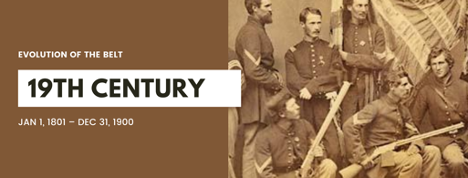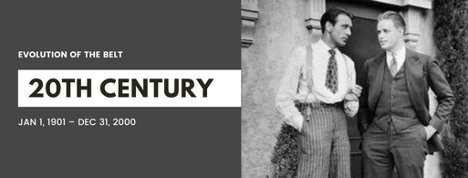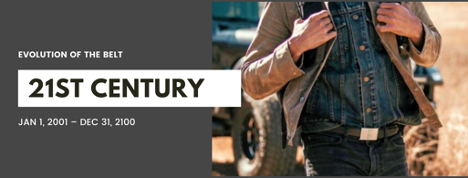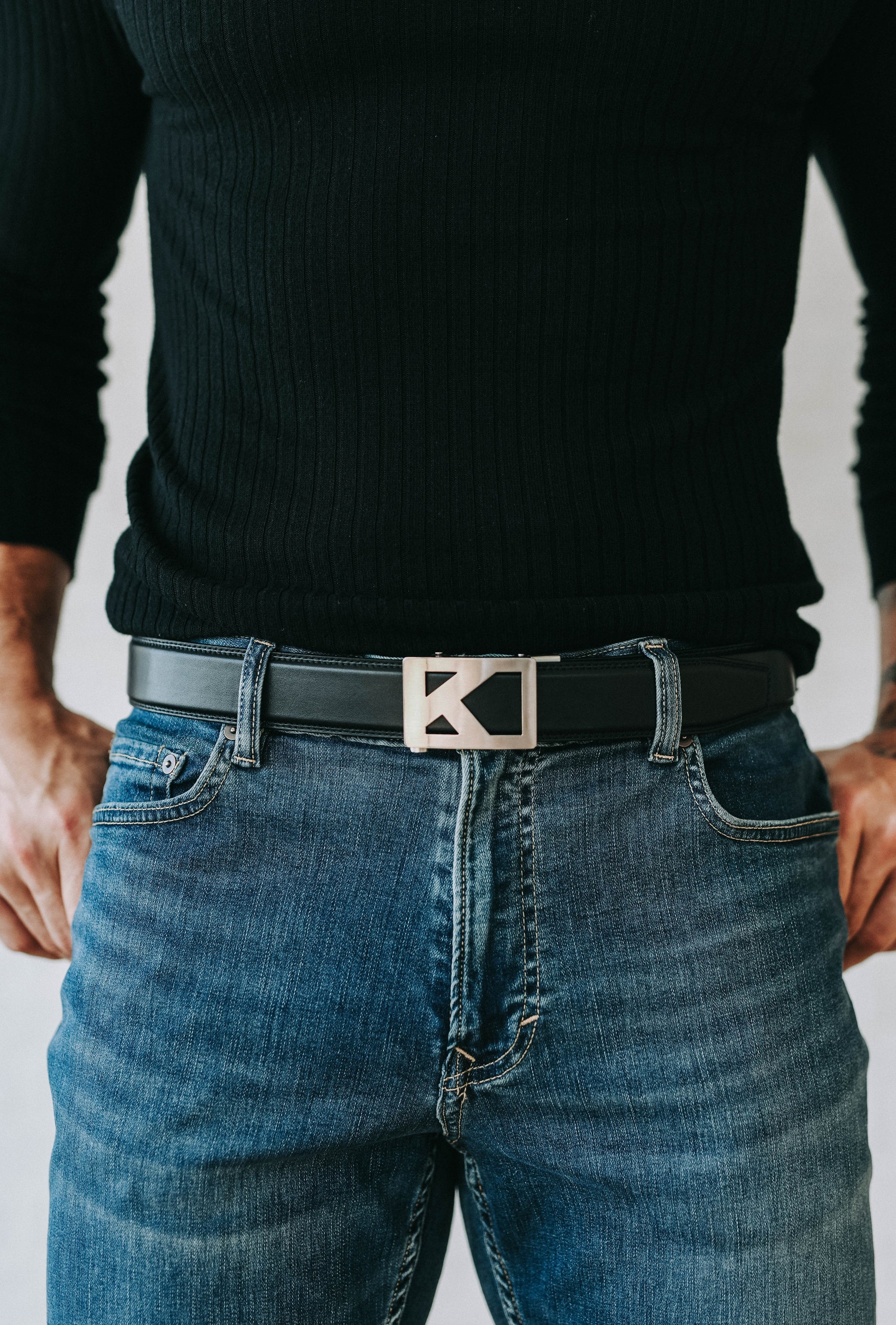
Ever stop to think where and when man started wearing a belt? We have and to be honest - its not exciting tale to say the least. Mostly because progress was soooo damn sloooow... It goes a little like this. About a 100,000 years ago cavemen figured out how to tie leather strips around their waists to keep the wind out and hides in place, among things. Then sometime later, the buckle and belt holes came about. (yawn) Pretty boring stuff up until about a minute ago (geologically speaking) and POW - the track belt was invented and changed everything. But I digress... lets do this properly.
THE BELT BEGINNINGS

The earliest documentation of male belts goes all the way back to the Bronze Age. While we do not have anyone posting stories to their Instagram back then- we do have some artifact findings that showcase the belts consisted of numerous interlocking vertical bronze elements with four convex round knobs on each. While we doubt the belt did much in regards to practicality- the belt did in fact exist.
Fast forward to the 19th century and up until the First World War, belts were then used as decorative and utilitarian parts of military uniform-particularly among officers. Belts were cinched up tighter than a hipster’s pants often giving the wearer a trim physique, emphasizing wide shoulders and a pouting chest.
You may be asking yourself: “didn’t guys wear pants before the 19th century?” and while they did, the belt was not considered an everyday essential. In fact guys wore pants in the 16th century, but it took until the middle part of the 19th century for trouser waists to fall to a lower line and belt loops to be created- justifying the need for a belt.
THE 20th CENTURY

In the 20th century belts started gaining traction- with more styles being developed, innovations starting to take shape, and materials being diversified to construct a belt, the setup for the 21st century to take belts into a whole new world began. Belts were worn for decorative and practical purposes. Often suspenders were worn in place of a belt but more and more the belt became a staple in every man's wardrobe.
Fast forward to the roaring 20’s, men started wearing belts as trousers were in style. Before the 1920s, belts served mostly a decorative purpose, and were associated with the military. Before trousers were a thing- pants didn't even have belt loops. Makes sense if you do not have said belt to put through those loops. From 1989 onward the US military standards regarding belt tightness during normal duty and non-duty activities have been somewhat more relaxed to prevent deleterious effects of prolonged excessive abdominal constriction. It was also in the late 20th century where the belt game really took form.
The evolution of belt materials just like the belt itself has changed over time. Certain belts historically were originally made from bronze elements as we mentioned and even heavy metal chain-like links. Once leather was used, it took over as the primary material and most were akin to length of cords or strings tied at the waist. Fancy right?
The 1940’s

In the 40’s belts started to gain thickness and varieties of belts were introduced. Being that belts now were worn for more occasions than just holding trousers as tight to your waist as humanly possible, belts now were made of leather and suede primarily.
However, by World War II, due to material shortages, belts became more uniform in appearance and were made from cheaper but still durable materials.
The 1960’s
In the 60’s the increased usage of metal in belts, especially toward the end of the decade, gave an alternative to the more flexible materials such as leather or suede. It had been almost 20 years before this was added to a belts composition.
THE 21st CENTURY 
Here we are. Present day and the belt has evolved into one of the most highly worn, fashionable, practical, and everyday essentials for any man. The belt game is stronger than ever before. With new materials, construction techniques, innovations in how belts fasten (shameless ratchet system belts by KORE plug), the belt is better than ever. Belts in the 21st century started becoming thick or thin (based on preference), stronger, more reliable and buckles started making their own fashion statement. Different colors, textures, sew lines and weights were introduced giving guys ultimate control over their belts.
The materials used to make belts have evolved from the Bronze Age to present. With lighter, stronger, and more durable belts now in the market- we had to ask...how did we get here?
Present Day

Today the belt materials used have grown to include leather, suede, nylon, and even some aluminums.
Sizes too have become more standardized and while the traditional belts used a hole and buckle pin style to fasten and secure on your waist, the more modern belts (as offered by KORE) feature the no holes ratchet system. Still today though a classic metal buckle is worn and various finishes to the metal is seen worn.
BELT ADVANCEMENTS

Technology advancements have a place in belt manufacturing and design. In the 21st Century, belts have kept up with the traditional leather components, but also have added some new and exciting innovations.
- Nylon Webbing- Nylon is one of the strongest, yet flexible, materials belts are made of today. Many belts now are primarily made of nylon giving a strong and at times lighter alternative
- Full Grain Leather- Just like that “agave tequila” you drink, you know the difference between fillers and 100% quality. With many belts claiming to be “leather” they often do not hold up to the wear and tear we throw at ‘em. Full grain and single cut leather belts are often a staple now in belt manufacturing. With leather being dyed and treated before it finalizes it’s construction- belts now are as sturdy as ever before
- Aluminium Alloy- Aluminum Alloy is some of the lightest yet strongest material out there- and many belt buckles are now made from this material as opposed to metal
WHERE NEXT
Where does the belt game go from here? Some concepts and prototypes are out there indicating new and futuristic advancements- such as digital tracking/reading to an iPhone, syncing to Bluetooth so you can jam out while you roam. Some belts today even feature hidden compartments, embedded app technology, composites made of lighter yet just as durable material. If anything, history has taught us that as we evolve so too will our belts.
